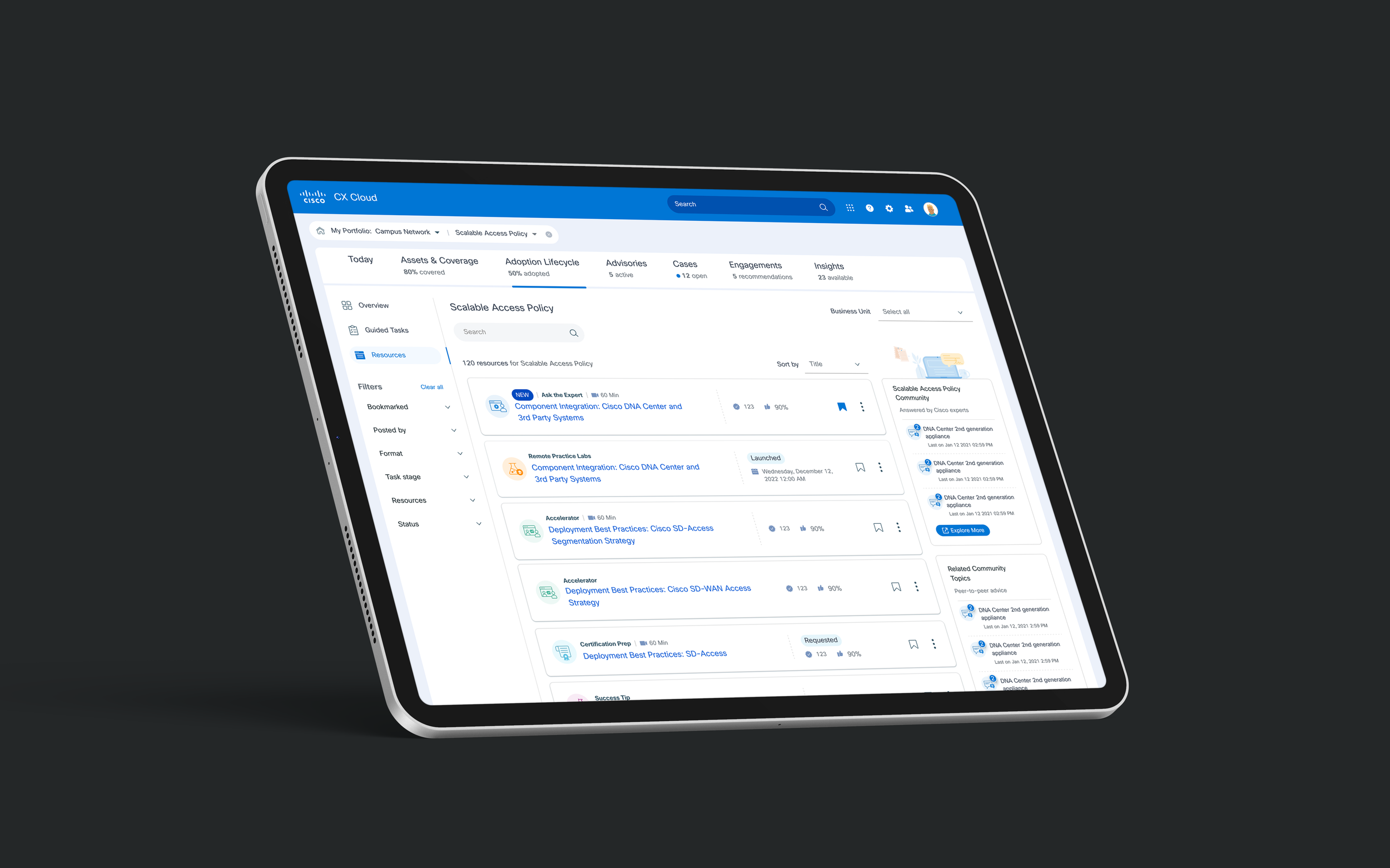PROJECT
Cisco Adoption Lifecycle
Creative Strategy / UX / UI

Overview
Housed within Cisco’s CX Cloud, the Cisco Adoption Lifecycle initiative was developed to support customers in effectively onboarding, implementing, and optimizing their Cisco technology investments. This initiative aims to drive deeper adoption and ensure renewal through a structured, six-stage “Lifecycle Racetrack” model: Onboard, Implement, Use, Engage, Adopt, and Optimize. Each stage provides tailored resources, guided tasks, and access to expert support, guiding customers through their technology journey.
Cisco's Lifecycle Adoption Loop is modeled after a six-stage "Lifecycle Racetrack"—Onboard, Implement, Use, Engage, Adopt, and Optimize.
Challenge
We redesigned the interface to guide users step-by-step through Cisco’s six-stage Lifecycle Racetrack. I collaborated across PM, research, engineering, and content teams to align on business goals and user needs. To enhance this experience, we integrated AI to personalize and adapt the journey in real-time.
AI Enhancements
Used AWS Comprehend, a natural language processing service, to analyze user feedback and support transcripts. It detected sentiment—positive, neutral, or negative—to guide interface responses and identify pain points. While it requires user-written text to work, even short comments from support tickets or survey responses provide rich emotional insights. These insights helped us identify key frustration points and adapt the interface in meaningful, user-aware ways.
Designed adaptive UI responses in Figma that shifted tone based on user frustration or success
Implemented role-based onboarding checklists and UI components that dynamically adjusted at login, surfacing task flows and modules specific to the user’s role and usage context in Figma that shifted tone based on user frustration or success
Mapped emotion-rich journeys in Miro to identify key friction points
Integrated Amplitude to connect behavioral drop-off with emotional states
Personalized Guided Tasks based on AI-tagged usage patterns, where AI categorized users by role, such as network administrators, IT operations managers, support engineers, procurement leads, and new end users, along with behavior history and engagement signals. Based on these roles, the system dynamically adjusted the onboarding checklist and surfaced interface components specifically designed for that user type. For example, network admins received advanced configuration tools upfront, while new end users saw simplified learning modules and guided walkthroughs. This tagging allowed the system to prioritize tasks most relevant to each user’s context, streamlining their experience and increasing the likelihood of successful adoption.
Tools AWS, Figma, Amplitude, Jira, Miro
Old Design
New Design
25% increase in onboarding satisfaction
30% rise in user engagement across lifecycle stages
40% improvement in task completion within six months
20% boost in long-term adoption and retention
Strong user feedback describes the experience as intuitive and supportive
By merging UX strategy with AI-driven personalization, we created an emotionally intelligent, user-centered experience that increased engagement, adoption, and customer satisfaction.
Result



Let’s Work Together.
With a highly collaborative approach and a passion for creating exceptional user experiences, I'm here to bring your vision to life.










